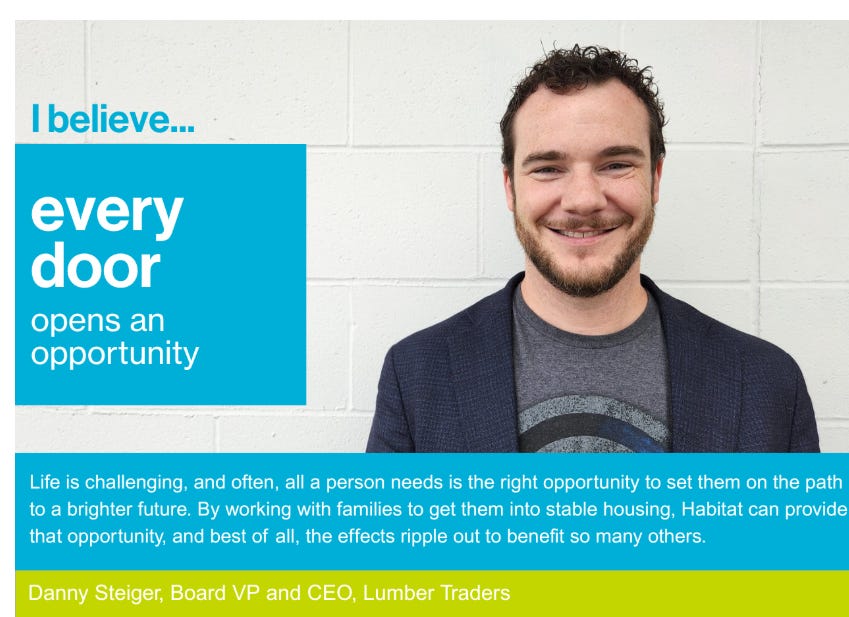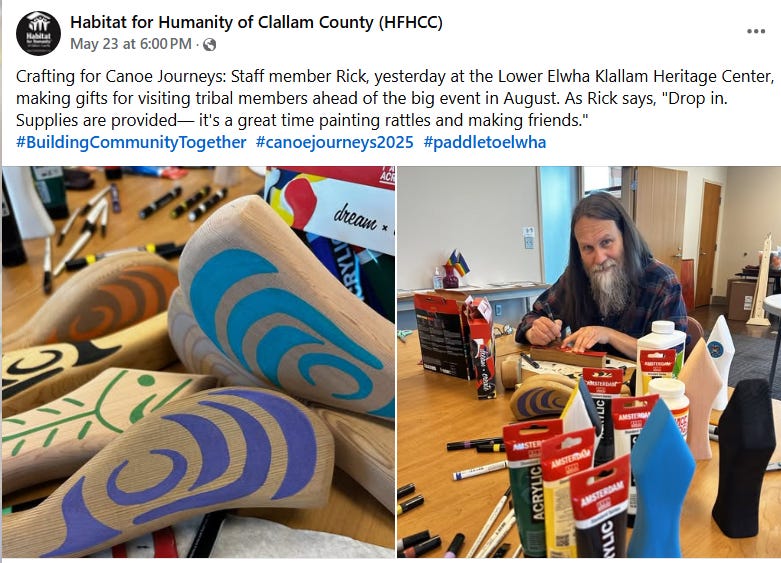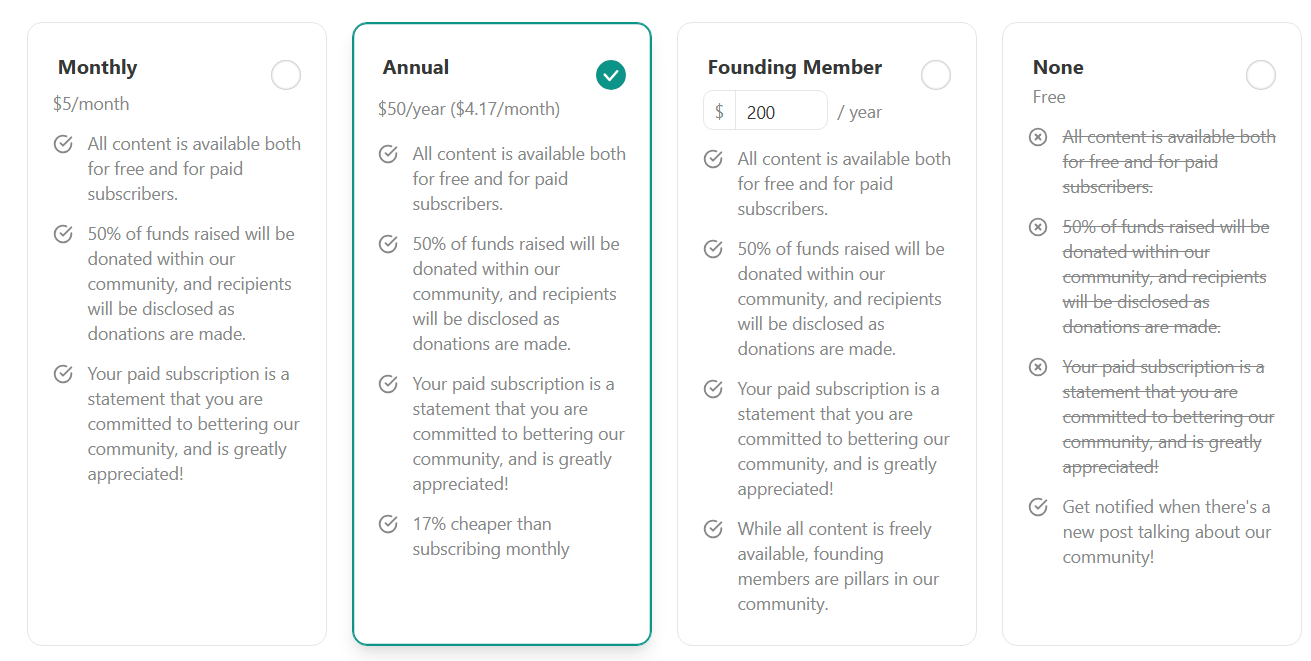Habitat for Humanity’s good intentions are clear—but as millions in public funding flow in and political partnerships deepen, the questions get harder to ignore.
With Feel Good Fridays on hiatus, the good news is that there’s another local blog to highlight the positive. Enter Clallam County Solutions, a Substack by Habitat for Humanity of Clallam County Vice President Danny Steiger. In a recent post, Steiger paints a glowing picture of his organization’s work, with stories of community, equity, and progress. But behind the PR packaging, the questions remain—questions that Steiger’s post tiptoes around or conveniently leaves unanswered.
Steiger writes, “We live in a time when headlines are loud, assumptions spread quickly, and simple truths can get lost in the shuffle.” He’s right. That’s why we’re here—to cut through the marketing fluff and ask the hard questions. Here’s what his “simple truths” leave out.
The $800K no-bid contract that wasn’t so simple
You might recognize Steiger’s name from his recent skirmish with CC Watchdog readers in the comments section after Habitat lobbied the Clallam County Commissioners to award them $800,000 in public Opportunity Funds for a no-bid contract with Jamestown Excavating. That project, Lyon’s Landing, was initially pitched as moving forward without the need for a formal bid process—because, as Habitat CEO Colleen Robinson stated in an email:
“At this time the Lyon’s Landing project is not using State or Federal funding so as a nonprofit we are not required to do a formal bid process. The ‘Quote’ below was submitted by JKT for a grant application that Habitat Clallam was applying for.”
So the no-bid contract was the original plan. It only changed when a watchdog blog and citizens began to ask questions. Steiger now tries to reframe that as a noble pause to comply with “public trust” and “ethical standards.” But this wasn’t a pivot—it was a retreat under scrutiny.

Equity for all, or just some?
Steiger says Habitat is “not about politics, not profit, not perfection.” The nongovernmental organization that isn’t into politics sent a delegation to Washington D.C. in February to meet with state and national leaders.
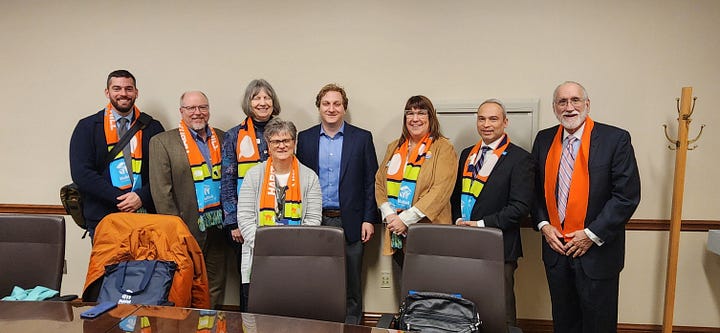
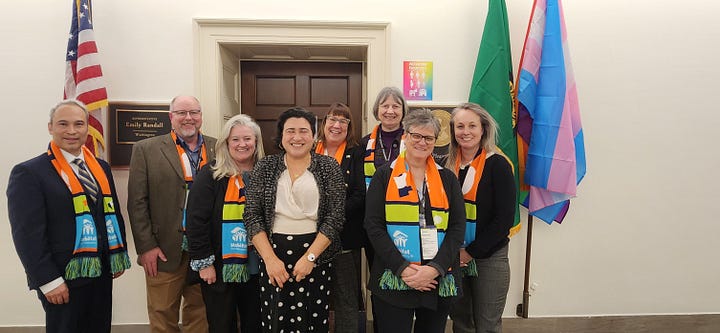
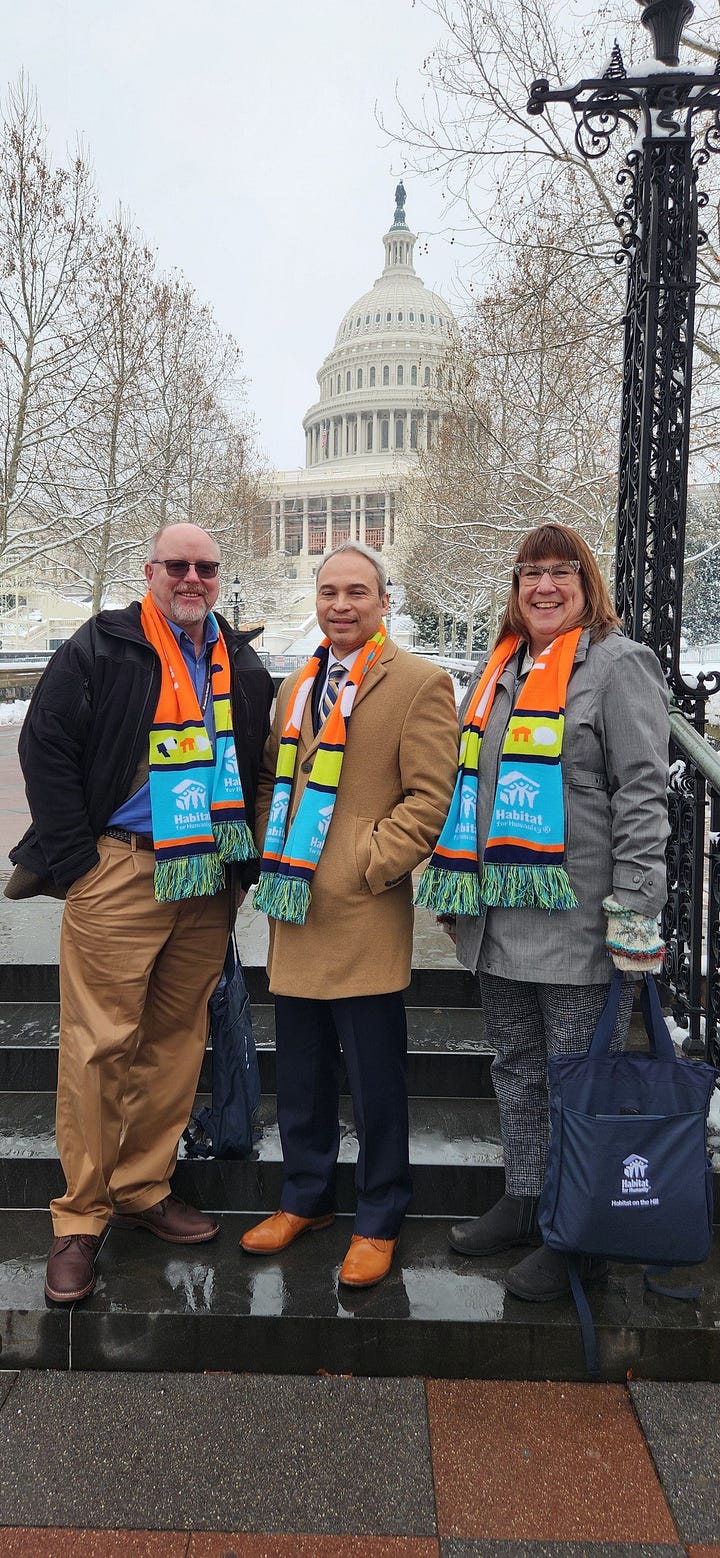
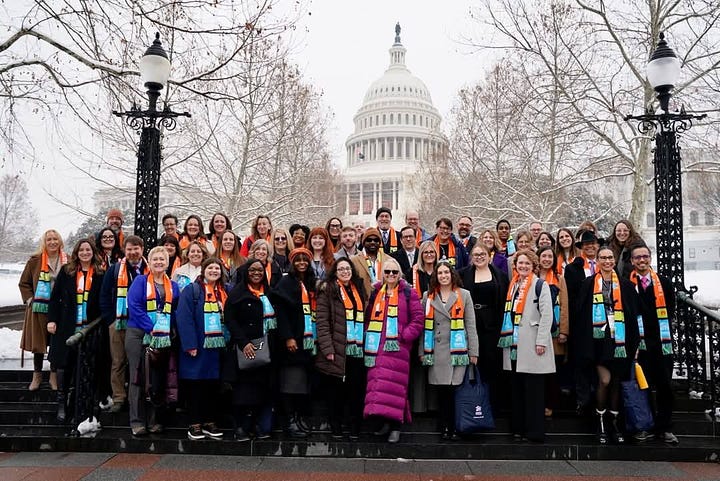
Habitat claims to be champions of housing affordability—yet they have partnered with the Jamestown S’Klallam Tribe, which continues to purchase properties and move them into federal trust, removing them from the tax rolls. This increases the property tax burden for the rest of Clallam County and drives up housing costs. If Habitat really wants affordability, why partner with an entity that actively contributes to the crisis?
Equity claims, but no transparency
Steiger boasts of Habitat’s “blind-review” process: applicants’ names, races, and backgrounds are removed before final selection. “This blind-review process ensures that families are chosen based solely on merit and need,” he writes.
Then why did Habitat launch the nation’s first Native American Housing Liaison by hiring Rick Dickinson, formerly of the Center for Inclusive Entrepreneurship?
If race is irrelevant, why is there a race-specific staff position funded entirely by federal HUD tax dollars in year one—and partially taxpayer funded thereafter? And where is the job description for this role? CC Watchdog has requested it repeatedly. Reviewing the job description would alleviate doubts that Habitat has abandoned its mission to create a world where everyone has a decent place to live and has instead begun catering to special interests.
But Habitat says they won’t share the job description. Steiger explains in his article that “clear, honest communication” is central to Habitat’s values.
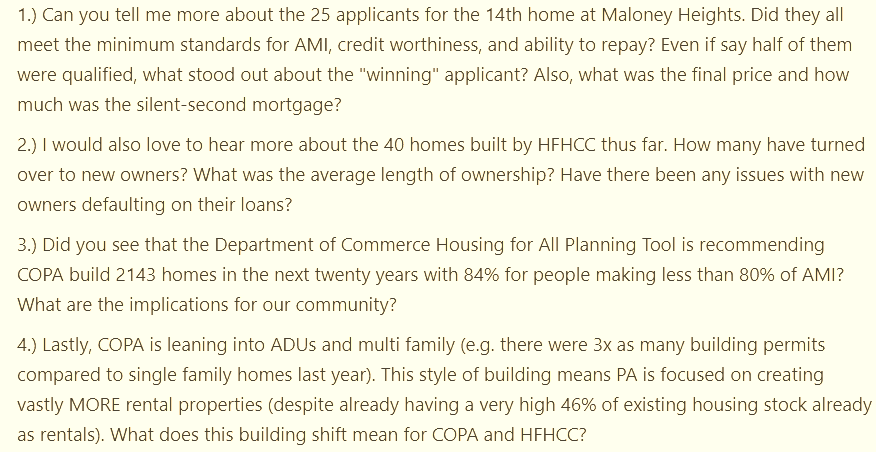
The donor discrepancy: Who gets credit, and why?
Looking at some of the numbers Steiger does mention reveals Habitat is bringing funding in from several sources:
$1 million private donation in 2021
$800,000 in 2025 Clallam Opportunity Funds (currently on hold)
$500,000 from the City of Port Angeles
$500,000 from Clallam County
$850,000 from Frances Lyons (the Carlsborg project's namesake)
And a $50,000 donation from the Jamestown S’Klallam Tribe
Now, guess which donor is mentioned four times in Steiger’s post? That’s right—Jamestown.
Frances Lyons, whose $850,000 contribution was more than 16 times larger, gets two mentions. The local governments (and you, the taxpayer), which contributed $1.8 million combined, get a passing reference, if any.
Yet somehow, the Tribe’s relatively modest $50,000 donation becomes the focal point—again and again.
Steiger insists that donations “have no bearing” on contractor selection, land purchases, or project design. But when Jamestown Excavating gets the contract and the Tribe is name-checked in every press release, it paints a very different picture. Whether it’s influence, optics, or political alliance, one thing is clear: not all donors are treated equally.
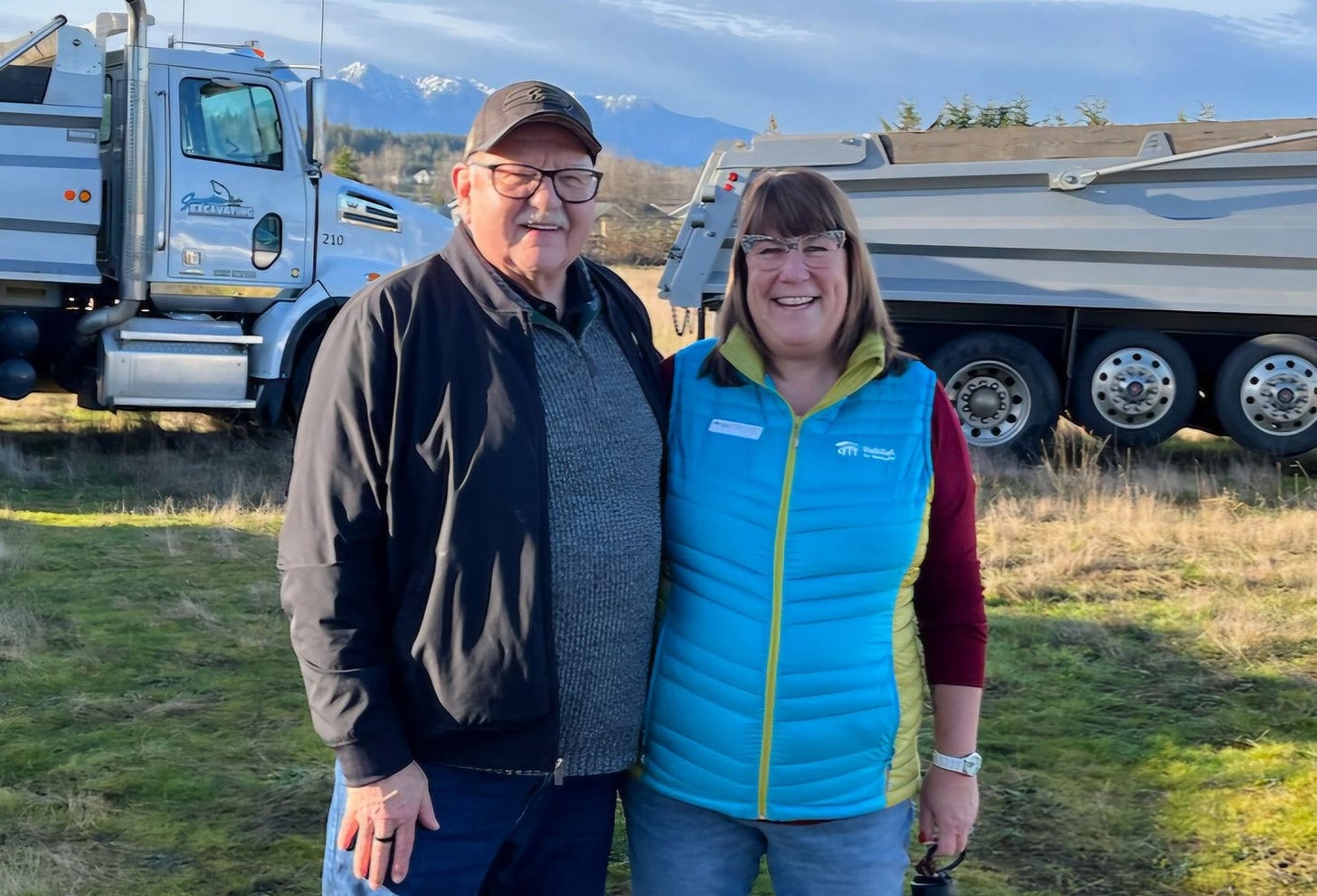
Regulatory whiplash and selective enforcement
Steiger laments that a Sequim building site hit a wall when it was suddenly deemed a wetland. “Despite multiple expert assessments… agencies upheld the designation,” he said.
Welcome to Clallam County.
Ironically, Jamestown can grade over wetlands, issue its own permits, and bypass regulations that would cripple other developers. It’s almost poetic that Habitat is now running into the same two-tiered system John Q. Public has endured for years. If you're not the tribe—or working with them—you're stuck playing by a different set of rules.
The liaison nobody’s allowed to question
The Native American Housing Liaison is central to this story, and yet it’s the role no one at Habitat will discuss publicly.
Steiger writes, “It’s not about setting aside homes based on race—a common misconception… we want to explore cultural and historical reasons why Native families don’t access Habitat homes.”
That begs a simple question: was there some law preventing Native Americans from applying before? Or did they not meet the existing criteria? If not, is Habitat planning to change those criteria behind closed doors?
And if the role is truly benign, then why hide the job description? Why ignore the residents when they ask about it?
Federal funding, forever
Steiger says HUD is covering:
100% of the liaison’s costs in year one
50% in year two
33% in year three
Then what? Who funds it in year four? Clallam taxpayers?
Let’s be honest—this isn’t a pilot program. It’s a permanent staff role dressed up as a grant-funded experiment. Programs don’t go away in Clallam County once grants dry up… they just get paid for by somebody else.
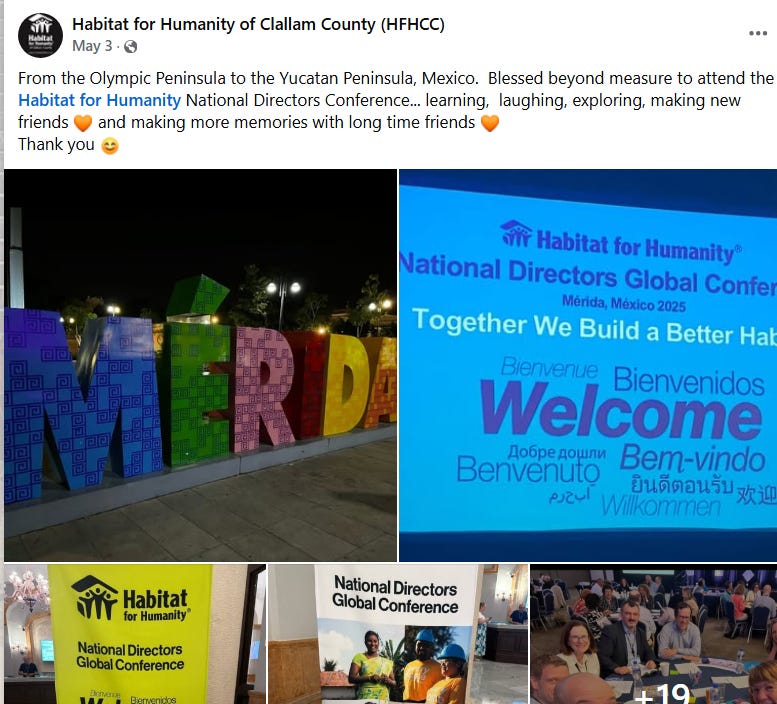
The big picture: PR vs. reality
Steiger ends with this line:
“It’s about making sure everyone has a fair shot… clear, honest communication is central to our values.”
But Habitat’s actions say otherwise:
No job description released
A no-bid contract awarded until challenged
Big-money donors getting outsized visibility
Public engagement limited, legitimate questions ignored
This isn’t just PR spin—it’s an attempt to revise history while the receipts still exist.

Look closer
We’re told not to ask questions. We’re told this is about fairness and equity. We’re told the tribe’s influence doesn’t shape decisions. But if that’s all true, why the selective silence? Why the vague answers? Why the contracts, the missing job postings, the grant coordination, and the recurring name “Jamestown” in every major decision?
Watchdogs aren’t here to celebrate narratives. They’re here to examine the facts—and to remind readers: the closer you look, the less “hope” and more “hypocrisy” you’ll find.



